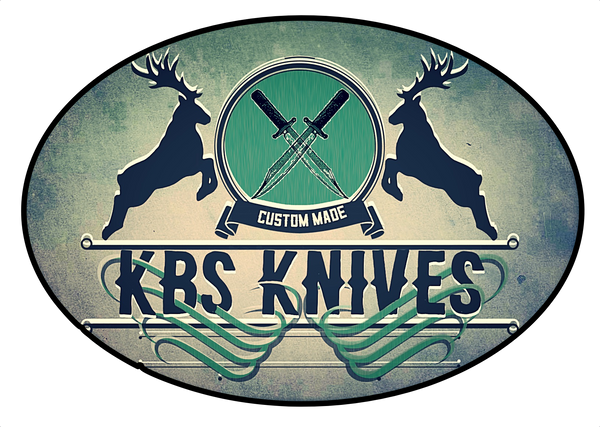
How heavy was a Viking Battle axe?
Share

The Viking battle axe is an iconic weapon that epitomizes the strength and craftsmanship of the Norse warriors during the Viking Age, which lasted from approximately 793 to 1066 AD. Known for its versatility in combat and functionality in daily life, the Viking battle axe was an essential tool for both warfare and survival. In this blog post, we’ll explore the various types of Viking battle axes, their weight and design, the factors influencing their construction, and their significance in Viking culture.
Types of Viking Battle Axes
Viking battle axes were not a single type but rather encompassed various designs suited to different purposes and combat styles. Here are the primary types of Viking battle axes:
1. Single-Headed Battle Axes
Single-headed battle axes were the most common type used by Viking warriors. They typically featured a sharp, broad blade that was effective for slashing and chopping.
- Weight: These axes generally weighed between 2 to 4 pounds (0.9 to 1.8 kilograms).
-
Design: With a haft length of 24 to 36 inches (60 to 90 centimeters), these axes offered a good balance between reach and maneuverability. The blades were often made of iron or steel, with a wooden haft, providing both strength and durability.

2. Double-Headed Battle Axes
Double-headed battle axes were more specialized and were often used by elite warriors. These axes featured blades on both sides, allowing for more versatile combat techniques.
- Weight: Double-headed axes typically weighed between 3 to 5 pounds (1.4 to 2.3 kilograms).
-
Design: They had a longer haft, often measuring 36 to 48 inches (90 to 120 centimeters), which provided greater leverage for powerful strikes. The double-edge design made them effective for delivering quick, lethal blows in battle.

3. Throwing Axes
Viking throwing axes were smaller and lighter, designed for ranged combat. These axes were typically thrown at enemies before engaging in close combat.
- Weight: They generally weighed about 1 to 2 pounds (0.45 to 0.9 kilograms).
-
Design: With a shorter haft and a compact blade, these axes were easy to throw and could be effective at a distance, allowing Viking warriors to engage their foes before closing in for hand-to-hand combat.

Weight and Design Considerations
The weight of a Viking battle axe is a crucial factor in its performance. Here are some considerations related to weight and design:
1. Material Selection
Viking battle axes were primarily made of iron or steel, with wooden handles. The choice of materials significantly affected the axe's weight and durability.
- Iron and Steel: High-quality iron and steel allowed for the creation of lighter axes without compromising strength. The type of steel used could vary, impacting the overall weight and sharpness of the blade.
2. Balance and Maneuverability
A well-balanced Viking battle axe was essential for effective use.
- Blade Shape: The shape of the axe blade could influence its weight distribution. Wider, flatter blades provided more striking power but could be heavier. Conversely, narrower blades were lighter and easier to maneuver.
- Haft Length: The length of the haft also played a role in balance. A longer haft could generate more power in a swing but might be more challenging to control in close-quarters combat.

3. Cultural Design Elements
Viking battle axes often featured unique designs and decorations, reflecting the warrior's status and craftsmanship.
- Engravings and Inlays: Many axes had intricate engravings or inlays that showcased the blacksmith's skill and the owner's prestige. These elements added weight but also cultural significance.
Historical Significance of the Viking Battle Axe
The Viking battle axe was more than just a weapon; it held considerable cultural and social significance in Viking society. The Vikings were not only fierce warriors but also skilled craftsmen, and their battle axes reflected this dual identity.
1. Symbol of Power
In Viking culture, the axe was a symbol of strength and status. Warriors who wielded impressive battle axes were often respected and feared.
-
Rituals and Ceremonies: The axe played a role in various rituals and ceremonies, symbolizing a warrior's readiness for battle and commitment to their clan or tribe. For Viking warriors, possessing a finely crafted axe could elevate their status among peers.

2. Versatile Tool
Aside from warfare, the Viking battle axe was also a practical tool for everyday life. It was used for tasks such as chopping wood, clearing land, and constructing shelters.
- Multifunctionality: This dual purpose made the battle axe a vital part of a Viking's toolkit, essential for both survival and combat. For Viking warriors, the ability to wield an axe for both battle and practical tasks showcased their versatility and adaptability.
3. Impact on Warfare
The Viking battle axe influenced combat strategies during the Viking Age. Its design and versatility allowed warriors to adapt to different fighting styles and environments.
-
Tactics: The ability to wield an axe effectively in battle required skill and training, shaping the way Vikings approached warfare. Many Viking warriors trained from a young age to master the use of their axes, which became a crucial part of their combat identity.

Modern Interpretations of Viking Battle Axes
Today, there is a growing interest in Viking culture, including the weapons they used. Many craftsmen and historians study Viking battle axes to better understand their design and construction.
1. Reenactments and Historical Fairs
Historical reenactments and fairs often showcase Viking battle axes, allowing enthusiasts to experience the weapon's weight and balance firsthand. Participants often dress as Viking warriors, adding to the authenticity of the experience.
2. Craftsmanship
Modern blacksmiths often recreate Viking battle axes using traditional techniques, offering valuable insights into the skills and methods of Viking-era smiths. This craftsmanship not only preserves history but also celebrates the artistry of Viking warriors.
3. Axe Throwing
Axe throwing has gained popularity as a recreational activity. Many axe-throwing venues feature Viking-style axes, allowing participants to connect with history while enjoying a fun and competitive experience. Engaging in this sport provides a unique way to appreciate the skills Viking warriors honed over centuries.

Conclusion
The Viking battle axe is an emblem of the strength, skill, and craftsmanship that defined the Norse warriors of the Viking Age. With weights typically ranging from 1 to 5 pounds (0.45 to 2.3 kilograms), these viking battle axe were designed for both combat and practical use, showcasing the ingenuity of Viking blacksmiths. Understanding the design, weight, and cultural significance of the Viking battle axe allows us to appreciate its role in history and its continued relevance in modern-day recreations and interest in Viking culture. Whether you’re a history enthusiast, a weapon collector, or someone looking to engage in axe throwing, the Viking battle axe remains a powerful symbol of the past, embodying the spirit of the Viking warriors who wielded it.
